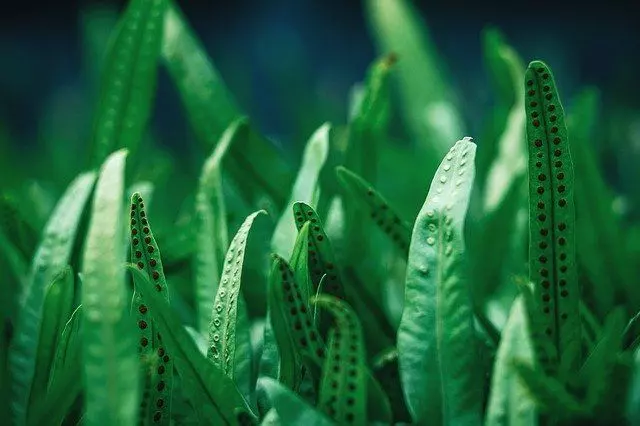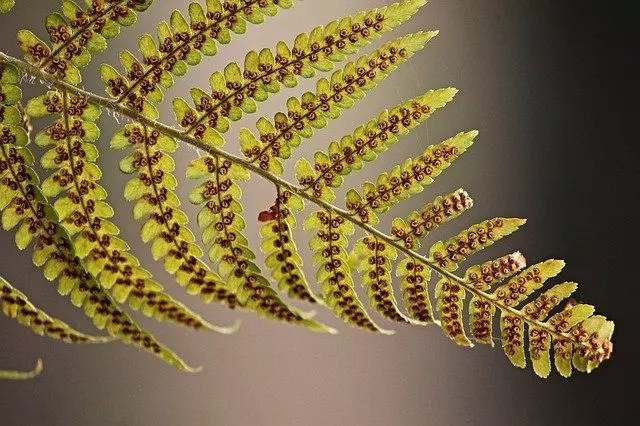Ferns are one of the first plants that appeared on our planet, so they have a long evolution to adapt to their environment and survive. Therefore, it is very interesting to learn about the propagation of ferns, which can occur in several ways, on their own or with our intervention if, for example, we want to get a plant equal to a fern that we have at home, propagating it to plant it in more places. Learn all about how to propagate ferns in this article.
Table of Contents
How to Propagate Ferns
The first thing you should know to understand how ferns propagate and how they are born is that ferns have several systems of propagation and multiplication. Specifically, they can propagate in three ways: spores, cuttings, and stolons, although ferns can also propagate in vitro.
Ferns are seedless plants, so we will talk about fern spores as the natural and main form of sexual propagation of these plants with millions of years of existence. This begins when the spore sacs mature and open, spreading them through the wind. Of all of them, only those that find a place with the necessary conditions will begin their growth stage. The first form of the plant in its almost embryonic stage is called Prothallus, which is usually no more than 0.6″ (1.5 cm) long. The propagation of ferns, like that of lycopods and echisetums, begins with the production of male and female gametes that, once fertilized, give rise to the egg or zygote from which a new plant will be born.
Similarly, there are also ferns capable of propagating through their subway stems. These create small protuberances that are very similar to bulbs and, once mature, fall to form another plant.
Finally, by asexual propagation of ferns, the technique of dividing the fern clump is also used. In this way, we ensure that we will get the same plant without too much risk. Of course, when dividing ferns, it is necessary to make sure that the divisions have enough roots so that the plant can root quickly in its new container.
Propagate Ferns from Cuttings
Although the vast majority of ferns are propagated by spores, you can also propagate ferns from cuttings. To achieve this type of ferns propagation from cuttings, we will explain in the following paragraphs everything step by step to make it easier for you:
1- We recommend propagating ferns from cuttings in late summer, so wait until it is this time to do it or do the whole process and keep the plants inside your house with a temperature suitable to that time to simulate it. Once this is cleared up, start preparing the cutting.
2- The cutting should be separated from the rhizome with its root network. Cut a section of the cutting, making sure it contains at least three root nodules. We recommend that you always take it close to the fronds that protrude from the rhizome of the plant itself.
3- Once the cutting is ready, you should move it quickly to the place where you want to plant the fern, either in a pot or in the ground. Cover it and do not compact the soil too much to favor drainage, since these plants need constant watering but not waterlogging.
4- If necessary, you should use some type of specialized fertilizer and/or rooting agent to ensure optimal growth and development.
- FASTEST ROOTING POWDER FOR PLANT CUTTINGS: Hormex rooting hormone powder is a unique product that encourages the natural process of rooting new plants from cuttings. Please check the list of plant varieties and rooting powder strength in the product photos.
- SUITABLE FOR ALL GROW MEDIUMS: Accelerate strong and healthy roots with this root stimulator for plants that are excellent for all grow mediums like Rockwool, coco, peat moss, soil, clay pellets, and more. As an added bonus, it also helps prevent root rot and sagging cuttings.
- NO BAD STUFF: Our root hormone for cuttings is an excellent powder to use even on the toughest and hard-to-root plants, like juniper, grapes, tomatoes, and more. It is made with no alcohol, dye, or preservatives, which is especially important when plants are for consumption.

How to Propagate Ferns by Stolons
Propagate ferns from stolons or runners is another method of fern propagation that is usually used for specific species, particularly those with thin, elongated stolons with several terminal buds. When stolons come into contact with the soil, make offshoots that can then be separated and repotted, thus obtaining the new plant.
Generally, this method is used in greenhouses that have an optimal climate, around 77 °F (25 °C), and that have specific containers with peat and mulch, in addition to correcting the pH of this substrate with other substances, such as calcium hydroxide. The important thing is that using this method, ferns can be produced throughout the year.

Propagate Ferns from Spores
Finally, we explain how to propagate ferns with spores, a process that occurs by itself in nature, but we can do it at home if what you want is to get new ferns from the one you already have at home:
1- With extreme care, collect the yellow, orange or reddish powder (depending on the species) that is usually found on the underside of the fern leaves. It is recommended to collect it when the small capsule containing the spores has turned a dark color. In nature the capsules open and the spores fall out, are moved by wind and gravity to a new area, and thrive in the soil.
2- After collecting it, you will need a container with soil. However, it is better to opt for more mineral soil than the universal substrate offers. Likewise, the soil you use should be moist but not too compacted.
3- Once you have spread the spores on top of the soil, water the container abundantly and cover it to prevent the spores from escaping because of the wind when the substrate dries out. Make sure that the container is always well moistened by watering several times a day in small doses.
4- Now you will have to be patient. It may take months before you can see firsthand that your attempt to reproduce ferns has given the expected results.
5- If you have obtained your first ferns we advise you to place them in a place with enough shade, but that receives a little light from the sun, never of direct form. If we have a place where moss grows, that will be a good place to place them.

Frequently Asked Questions
Our readers always write to us with various queries, and in this case, they sent several queries about how to propagate ferns. Do not forget to write to us through the contact form if you have any questions.
Of course, you can propagate ferns. There are several ways to do it, and in this article, we explain three ways to propagate ferns.
Yes, you can propagate ferns by cuttings, but there are other methods that we explain in this article on fern propagation.
Yes, sure, you can propagate ferns in water, but it is not the best way, here we explain other methods for the correct propagation of ferns.
We hope this article on how to propagate ferns will be useful. Learn more about the best time to water plants. If you still want to know more about ferns we recommend this book from which we got some great tips (Order here).
- Hardcover Book
- Weinstein, Mobee (Author)
- English (Publication Language)



